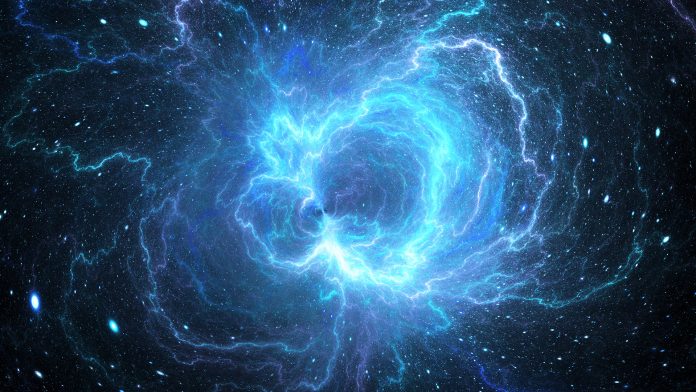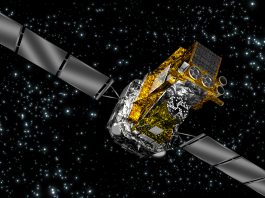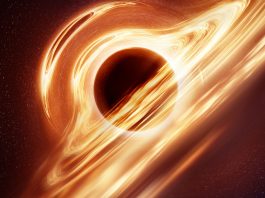New research led by the University of Bath has unveiled that gamma-ray bursts may sometimes be formed by newborn supramassive stars, not black holes.
Satellites orbiting Earth have detected gamma-ray bursts (GRBs) as luminous flashes of the most energetic gamma-ray radiation lasting milliseconds to hundreds of seconds. These blasts occur billions of lightyears from Earth in distant galaxies.
A sub-type of a gamma-ray burst, known as a short-duration gamma-ray burst, starts life when two neutron stars collide. In the final moments of their life, these ultra-dense stars generate gravitational waves just before triggering a gamma-ray burst.
Previously, scientists have agreed that gamma-ray bursts were powered by a newly formed black hole; however, new research from an international team of astrophysicists, led by the University of Bath’s Dr Nuria Jordana-Mitjans, is challenging this theory.
The team found that some short-duration GRBs are generated by the birth of a supramassive star, not a black hole.
Dr Jordana-Mitjans said: “Such findings are important as they confirm that newborn neutron stars can power some short-duration GRBs and the bright emissions across the electromagnetic spectrum that have been detected accompanying them. This discovery may offer a new way to locate neutron star mergers, and thus gravitational waves emitters, when we’re searching the skies for signals.”
The paper, titled ‘A Short Gamma-Ray Burst from a Protomagnetar Remnant,’ is published in The Astronomical Journal.
Are short-duration gamma-ray bursts powered by a black hole or by the birth of a long-lived neutron star?
Short-duration gamma-ray bursts start life when two neutron stars crash into each other, causing a jetted explosion that releases the gamma-ray radiation that makes a GRB, followed by a longer-lived afterglow. A day later, a kilonova is produced from the radioactive material that was ejected during the explosion.
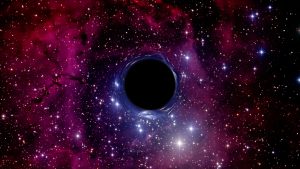
However, scientists have long debated what in particular is left behind after the collision, and consequently, the power source that gives a gamma-ray burst its energy. To resolve this debate, the Bath-led team has found new evidence which could illuminate the correct theory.
Scientists have been split between two theories. The first theory proposes that neutron stars merge to briefly form an extremely massive neutron star. This star then collapses into a black hole in a fraction of a second. The second theory argues that the two neutron stars result in a less heavy neutron star with a higher life expectancy.
Most astrophysicists have supported the black hole theory, agreeing that a massive neutron star must collapse almost instantly for a gamma-ray burst to be produced.
Discovering more about neutron star collisions with electromagnetic signals
The subsequent gamma-ray bursts produce electromagnetic signals which can be measured by astrophysicists to learn more about neutron star collisions. The signal that comes from a black hole is expected to differ from that coming from a neutron star remnant.
The gamma-ray burst explored for this study (named GRB 180618A) produced an electromagnetic signal that would be expected from a neutron star remnant rather than a black hole.
Elaborating, Dr Jordana-Mitjans said: “For the first time, our observations highlight multiple signals from a surviving neutron star that lived for at least one day after the death of the original neutron star binary.”
Professor Carole Mundell, study co-author and Professor of Extragalactic Astronomy at Bath, said: “We were excited to catch the very early optical light from this short gamma-ray burst – something that is still largely impossible to do without using a robotic telescope. But when we analysed our exquisite data, we were surprised to find we couldn’t explain it with the standard fast-collapse black hole model of GRBs.
“Our discovery opens new hope for upcoming sky surveys with telescopes such as the Rubin Observatory LSST, with which we may find signals from hundreds of thousands of such long-lived neutron stars, before they collapse to become black holes.”
Disappearing afterglow
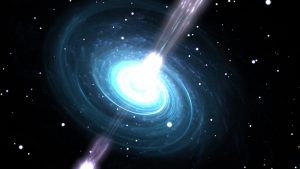
The researchers were initially puzzled as the optical light from the afterglow that followed GRB 180618A disappeared after just 35 minutes. After further analysis, the team found that the material responsible for such a brief emission was expanding close to the speed of light. This was caused by a source of continuous energy pushing it from behind.
The emission had the imprint of a newborn, rapidly spinning and highly magnetised neutron star, called a millisecond magnetar. The team discovered that the magnetar that followed the gamma-ray burst was reheating the leftover material from the crash as it was slowing down.
In GRB 180618A, the magnetar-powered optical emission was 1,000 times brighter than what was expected from a classical kilonova.

